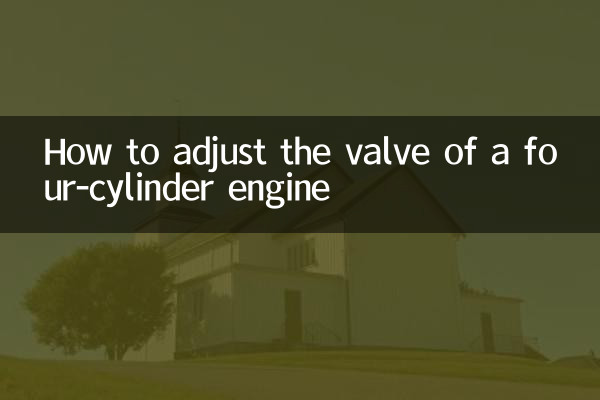How to adjust the valve of a four-cylinder engine
In automobile repair and maintenance, adjusting the valve clearance of a four-cylinder engine is an important task. Valve clearance that is too large or too small will affect engine performance and even cause damage. This article will introduce in detail the steps, precautions and related data of four-cylinder engine valve adjustment to help you better complete this task.
1. The importance of valve clearance adjustment

Valve clearance refers to the gap between the top of the valve stem and the rocker arm. The correct valve clearance can ensure that the valve operates normally at high temperatures and avoids loose valve closing or increased wear due to thermal expansion. If the clearance is too large, it will cause increased valve noise and reduced power; if the clearance is too small, it may cause valve ablation or insufficient cylinder pressure.
2. Tools and materials for adjusting valve clearance
Before you start adjusting, you need to prepare the following tools and materials:
| Tools/Materials | use |
|---|---|
| feeler gauge | Measure valve clearance |
| wrench | Loosen and tighten the valve adjustment screw |
| screwdriver | Auxiliary adjustment |
| Service manual | Reference engine valve clearance standard value |
| marker pen | Mark valve position |
3. Four-cylinder engine valve adjustment steps
Here are the detailed steps for adjusting valve clearance in a four-cylinder engine:
1. Make sure the engine is cold
Valve clearance measurement and adjustment should be performed after the engine has cooled down, as metal expansion in a hot state will affect the measurement results.
2. Find the valve timing mark
Rotate the crankshaft so that the first cylinder piston is at compression top dead center (TDC). This can be confirmed by aligning the marks on the flywheel or pulley.
3. Check valve clearance
Use a feeler gauge to measure the valve clearance and compare with the standard value in the service manual. The valve clearance standards of common four-cylinder engines are as follows:
| Engine model | Intake valve clearance (mm) | Exhaust valve clearance (mm) |
|---|---|---|
| Volkswagen EA211 | 0.20-0.30 | 0.30-0.40 |
| Toyota 1ZR | 0.15-0.25 | 0.25-0.35 |
| Honda L15B | 0.18-0.22 | 0.23-0.27 |
4. Adjust valve clearance
If the measured value does not meet the standard, loosen the valve adjustment screw, use a feeler gauge to adjust the gap to the appropriate range, then tighten the screw and check again.
5. Adjust other cylinders in sequence
Adjust the valve clearances of other cylinders in sequence according to the engine's firing order (usually 1-3-4-2).
4. Precautions
1. Be sure to refer to the vehicle maintenance manual when adjusting. The valve clearance standards of different engines may be different.
2. After adjustment, start the engine and check whether there is any abnormal noise or unstable operation.
3. If the valve clearance changes frequently, the valve or rocker arm may be worn and further inspection is required.
5. Summary
Adjusting the valve clearance on a four-cylinder engine is a job that requires patience and meticulousness. With the right tools and procedures, you can ensure your engine runs smoothly and extend its life. If you are not familiar with the operation, it is recommended to seek help from a professional technician.

check the details

check the details